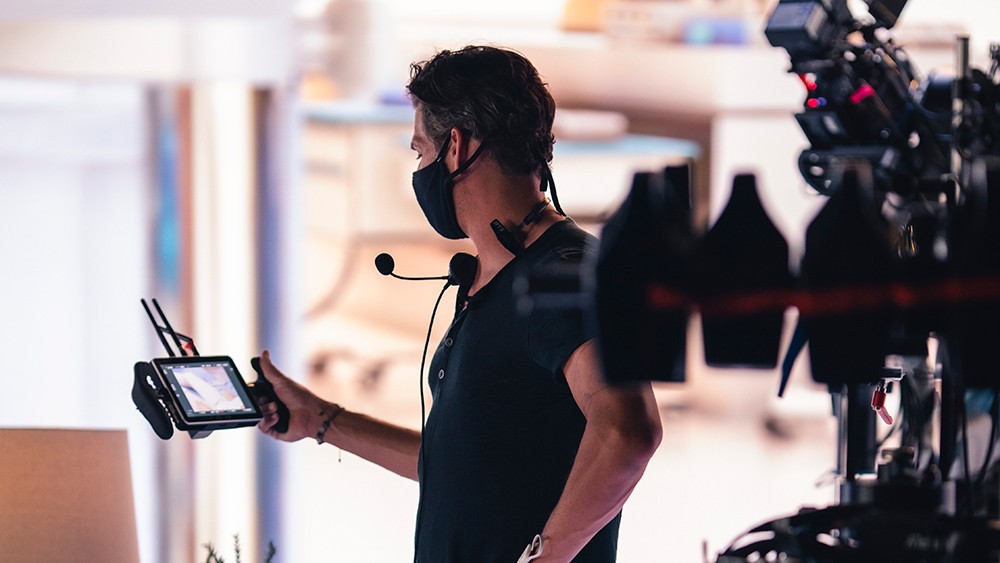Behind the Scenes: The Process of Media Services Production
Have you ever wondered what goes on behind the scenes of media services production? From capturing stunning photographs to creating captivating videos, the process of bringing your vision to life involves a combination of creativity, skill, and attention to detail. In this blog post, we’ll take a behind-the-scenes look at the process of media services production, offering insights into the steps involved and the importance of each stage in creating high-quality content that resonates with audiences.

Unveiling the Magic: Behind the Scenes of Media Services Production
The world of media services seems like an enigma. You provide a concept, and then, seemingly out of thin air, a captivating video, a stunning photograph, or a flawlessly executed livestream appears. But what happens behind the scenes? Let’s peel back the curtain and explore the fascinating process of media services production, from initial brainstorming to final delivery.
Stage One: Planting the Seeds of Creativity – Consultation and Collaboration
Every media project begins with a spark of an idea. This is where you, the client, come into the picture. The initial consultation stage involves:
- Understanding Your Vision: Media service providers take the time to understand your vision, goals, and target audience. This could involve brainstorming sessions, mood boards, and discussions about the desired style and tone of the project.
- Project Scope Definition: Once the vision is clear, the project scope is defined. This includes details like the type of media (photography, videography, etc.), timeline, deliverables, and budget.
- Contract and Logistics: A formal contract outlining the project details, fees, and timelines is established. Logistics such as location scouting (if applicable) and scheduling are also addressed.
Stage Two: From Script to Storyboard – Pre-Production Takes Center Stage
With a clear vision and a signed contract, pre-production sets the stage for a smooth and successful shoot. Here’s what unfolds:
- Scriptwriting and Storyboarding: For video projects, a script is written to outline the narrative flow. Storyboards, visual representations of the script, are also created to ensure everyone is on the same page regarding camera angles, shot composition, and scene flow.
- Location Scouting and Permitting: If your project requires filming on location, scouts will identify suitable locations and secure any necessary permits.
- Equipment Selection and Crew Assembly: The media service provider assembles the right crew for the project, from videographers and photographers to sound technicians and lighting specialists. The necessary equipment is also selected based on the project’s requirements.
Stage Three: Lights, Camera, Action! – The Production Phase
It’s showtime! The production phase is where the magic truly happens. Here’s a glimpse into what goes on during a typical shoot:
- The Art of the Shoot: The filming or photography takes place under the direction of the project lead. This could involve capturing interviews, filming live events, or staging product demonstrations, depending on the project.
- Adapting to the Unexpected: Even with meticulous planning, unexpected situations can arise. The experienced media services crew is adept at adapting and problem-solving to ensure the project stays on track.
- Capturing Multiple Takes: Rarely is a single take perfect. The crew will capture multiple takes of each scene or shot to ensure they have a variety of options during the editing process.
Stage Four: Weaving the Narrative – Post-Production Brings it All Together
Once the filming or photography is complete, the post-production phase begins. This is where the raw footage is transformed into a polished and engaging final product:
- Editing Magic: Video editors meticulously craft the narrative by selecting the best takes, arranging them in a compelling sequence, and incorporating music and sound effects. For photography, editing involves color correction and any necessary adjustments to lighting and composition.
- Motion Graphics and Visual Effects: For certain projects, motion graphics or visual effects may be added to enhance the visual storytelling and create a more impactful experience.
- Client Feedback and Revisions: The edited project is presented to the client for feedback. Revisions can be made to ensure the final product aligns perfectly with the client’s vision.
Stage Five: Delivery and Distribution – Sharing Your Story with the World
The final stage involves delivering the finished media product and ensuring its successful distribution:
- Delivery of Final Files: The media service provider delivers the final video, photographs, or other media assets in the agreed-upon format.
- Distribution Strategy: Depending on the project, a distribution strategy may be developed. This could involve uploading the video to social media platforms, submitting it to film festivals, or integrating it into a website.
- Project Wrap-Up and Archiving: The project is formally concluded, and the media service provider may archive the raw footage or photographs for future reference, if required.
The world of media services production is a fascinating blend of creativity, technical expertise, and seamless collaboration. By understanding the different stages involved, you gain a deeper appreciation for the meticulous process that transforms a simple idea into a captivating media experience. So, the next time you witness a stunning photograph or an engaging video, remember the dedicated team behind


